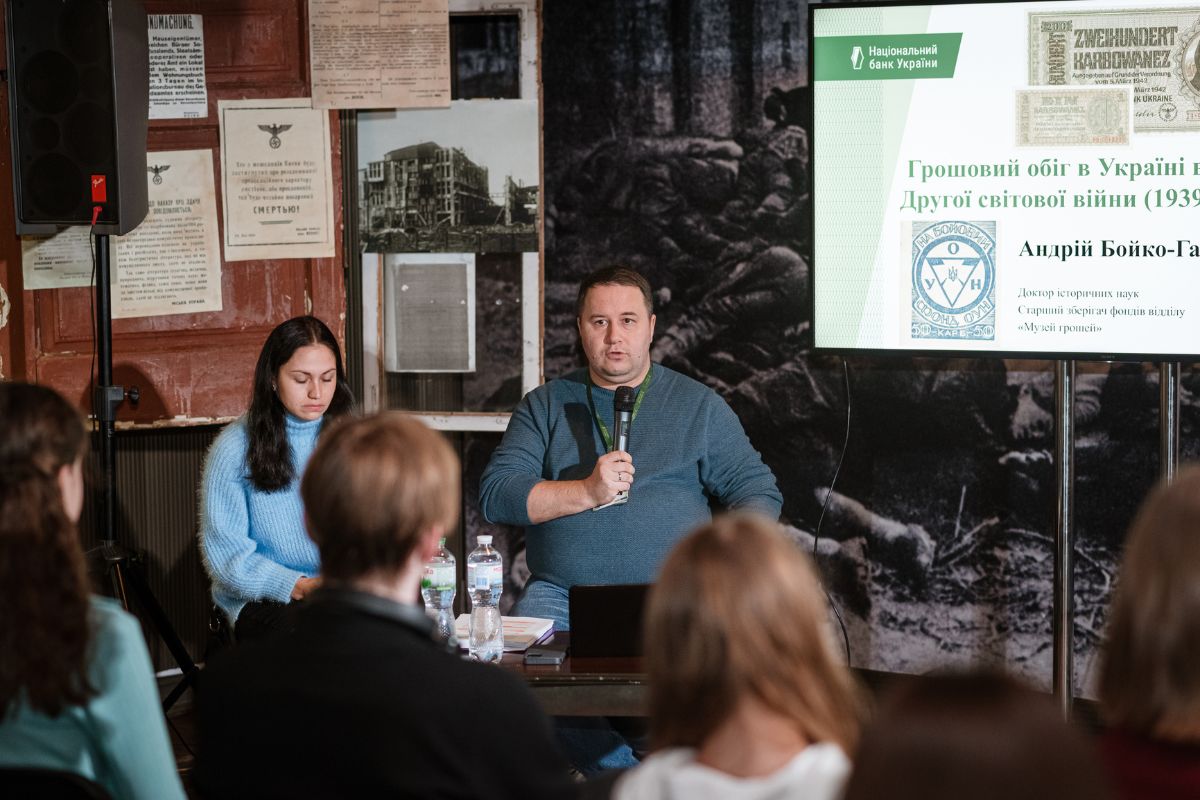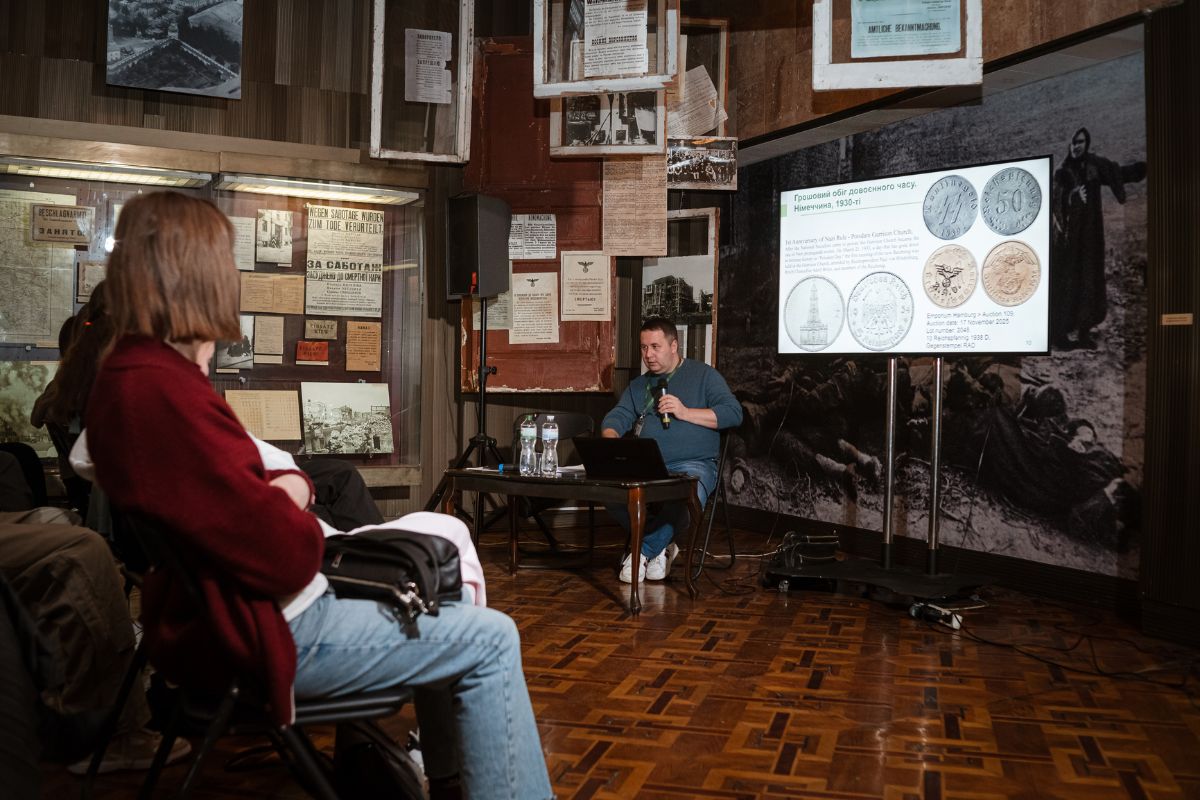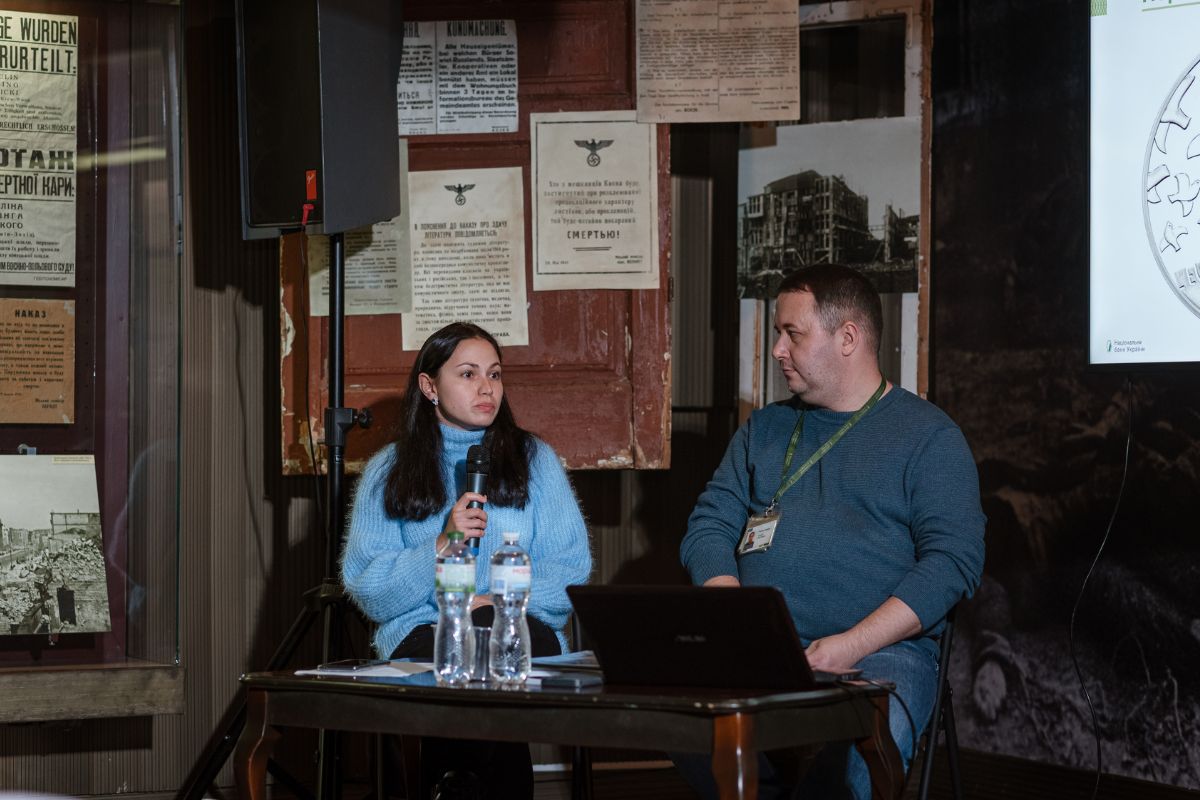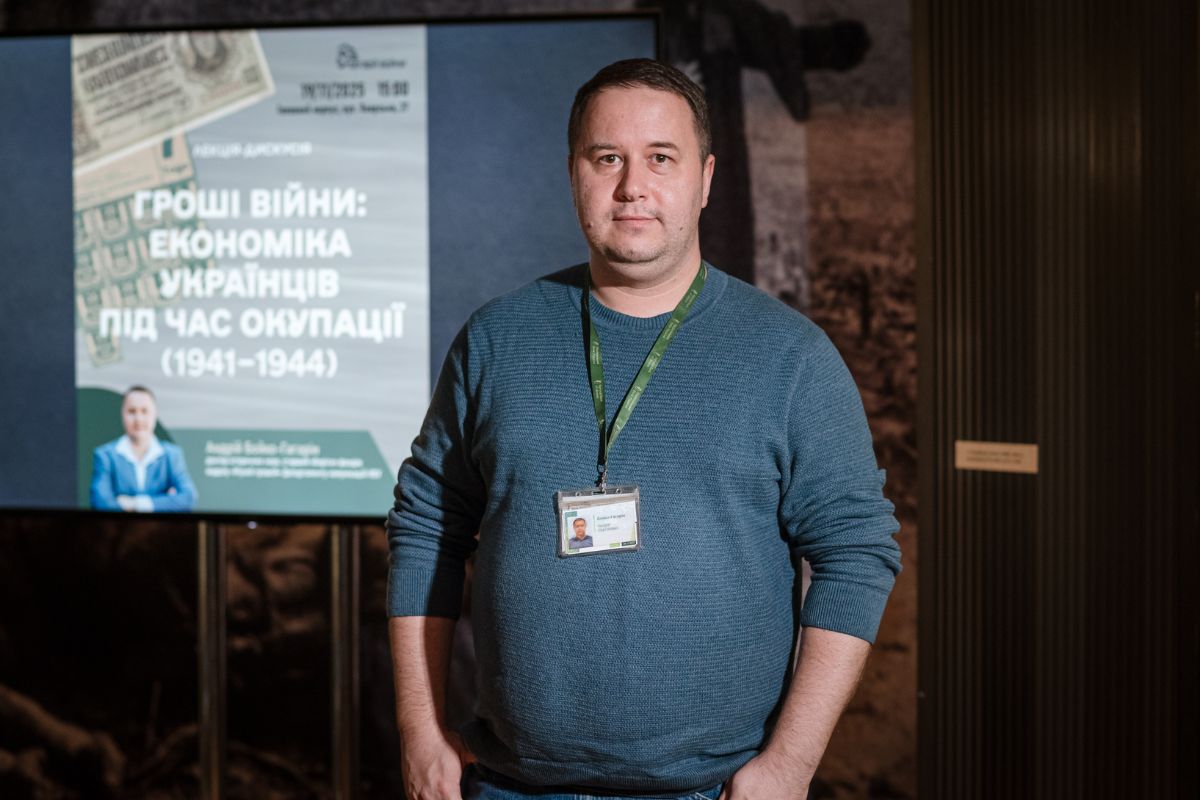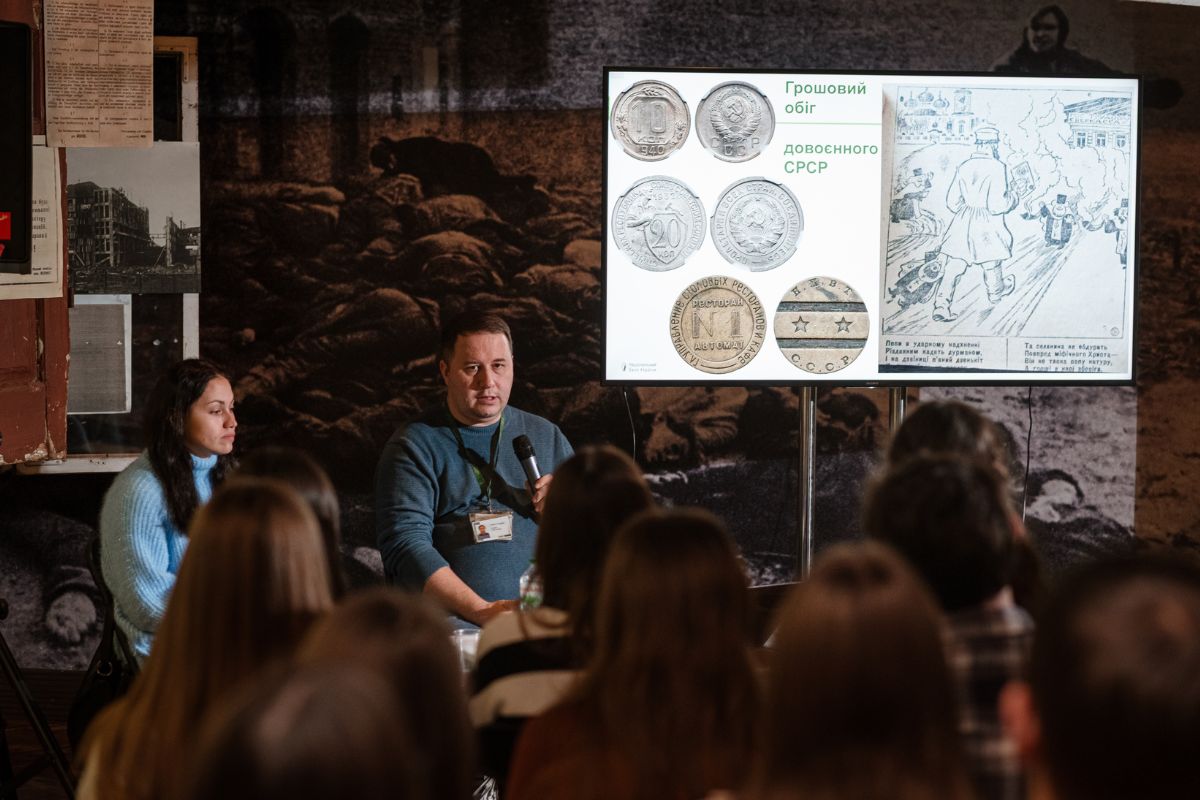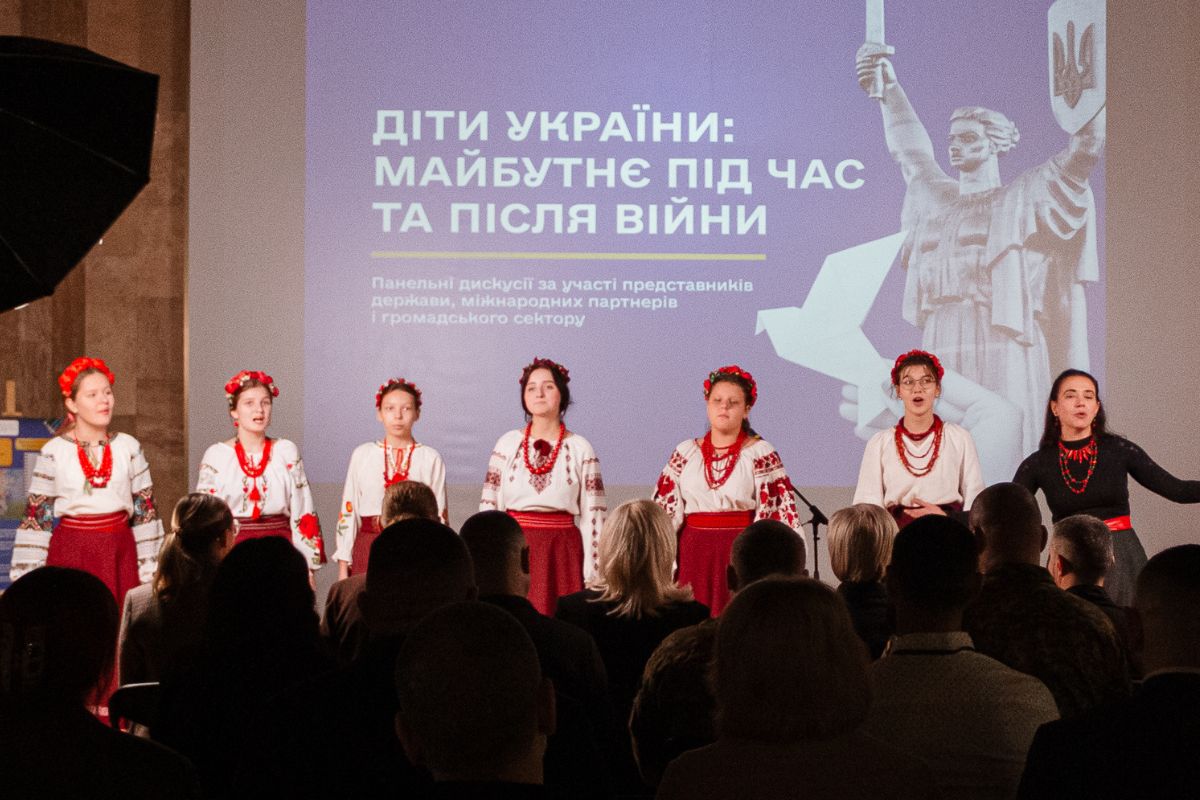Numismatist, Doctor of History, and Senior Curator of the Funds at the NBU Money Museum, Andrii Boiko-Haharin, visited the War Museum with a lecture. Based on materials from the collections of both museums and rare collections from abroad, he familiarized the audience with the financial systems of Ukraine during the Second World War.
They discussed what money circulated in Ukraine at the time, how the rules of currency circulation changed, and how this affected people’s lives. The attendees saw genuine Soviet cash receipts, ration cards, and withdrawal certificates—documents that allow one to literally touch history and understand how the wartime economy functioned.
Andrii Boiko-Haharin explained why the 1938 Soviet banknotes had a militaristic design, how the money system in the Gulag camps operated, and why the USSR’s financial policy was an instrument of control over people.
After the USSR’s entry into the territory of Poland on September 17, 1939, złotys were exchanged for Soviet karbovanets, and with the start of the German-Soviet War, the Germans created their own monetary system for the occupied Ukrainian territories. Specifically, the Central Issuing Bank “Ukraina” planned to issue occupational karbovanets with denominations from 1 to 200. However, some of these denominations never entered circulation.
To withdraw Soviet money, the occupying power issued “withdrawal certificates”—a document confirming the seizure of savings without the right to compensation. This became one of the mechanisms of economic pressure on the population. Different rules were in effect in the Transnistria Governorate, which was under Romanian control: the main currency was the Romanian leu, but Soviet karbovanets were temporarily permitted to avoid economic collapse.
Ration cards and coupons were introduced throughout the occupied territory. Money often depreciated, and only access to goods and the ability to buy necessities were truly valuable. Separate monetary tokens were also introduced for specific needs. The lecturer demonstrated the currency units of Polish labor camps, the Łódź Ghetto marks, and the jetons of Soldatenheime—recreational places for German military personnel.
Andrii also addressed the bofons of the OUN and UPA—a type of receipt used for fundraising, purchasing necessities, and supporting the insurgent movement among the population. Monetary processes in Transcarpathia, which was annexed to the Ukrainian SSR in 1945, and the difficult economic conditions of the early post-war USSR, particularly the famine of 1946–1947, were briefly examined.
The lecture concluded with a lively discussion and questions from the audience. Thanks to the artifacts and the numismatist’s expert explanations, it was possible not only to see the diversity of the monetary systems operating in the Ukrainian lands but also to feel how financial policy was transformed into a tool of power. Each regime developed its own monetary instruments, which simultaneously served as a means of calculation, a political symbol, and a mechanism for controlling people’s lives.

